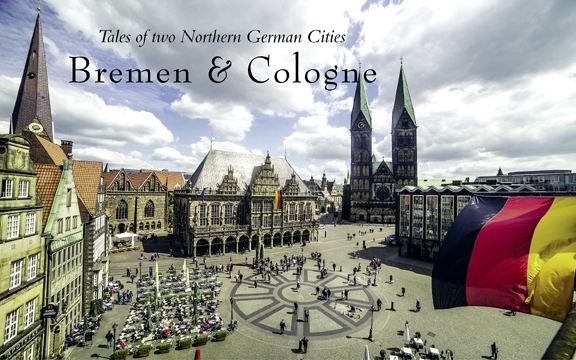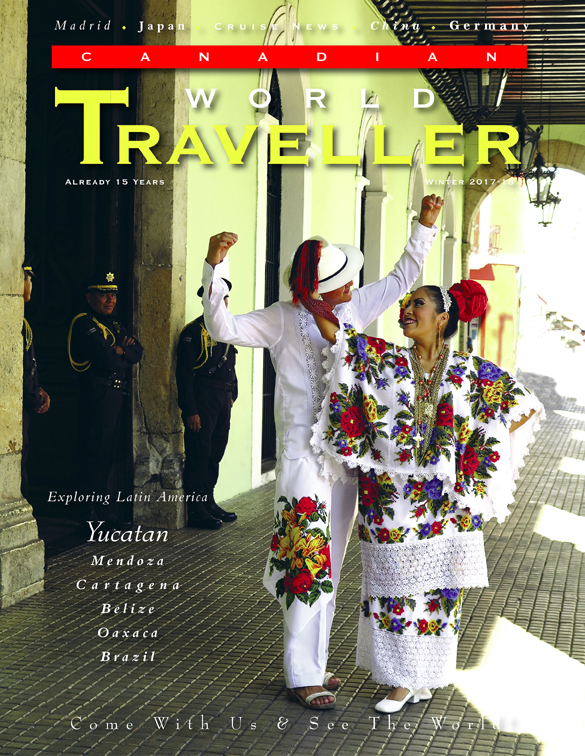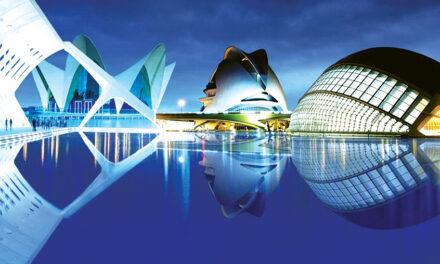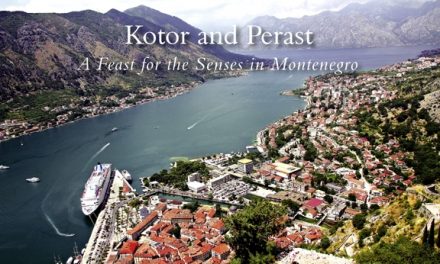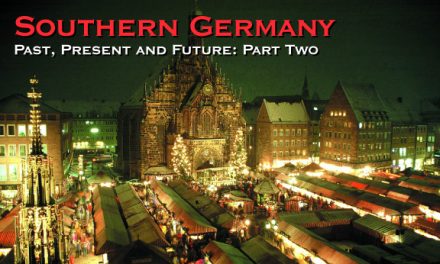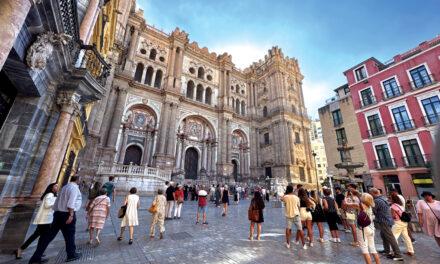Germany
Tales of two Northern German Cities Bremen & Cologne
Article and photography by Jennifer Merrick

Bremen
Sleeping Beauty, Cinderella and Little Red Riding Hood are Brother Grimm’s fairy tales we’re all familiar with. But have you heard of the Town Musicians of Bremen? I hadn’t until I visit Bremen, a city located along the Weser River in northwest Germany. Both the tale and the city turn out to be charming.
Die Bremer Stadtmusikanten, as the tale is called in German, tells the story of four animals of a certain age and no longer useful to their masters, who set off to Bremen to become musicians. On the way there, they encounter robbers and working together the senior misfits scare them off and live happily ever after.
Today in Bremen’s well-preserved town square, there’s a bronze sculpture of a donkey, dog, cat and rooster, all standing on top of each other to commemorate the story. Tourists pay homage by rubbing the two feet of the donkey, which is believed to make your wishes come true.
“You need to rub both,” I’m told. “Otherwise, you’re just shaking hands with a donkey.”
Of course, this is only mentioned afterwards.
But it is a wish come true just to be in this European market square with its cathedral, Roland Statue, cobblestoned pedestrian streets and its most impressive town hall. The Rathaus was built between 1405 and 1410 in Gothic style with a Renaissance facade added 200 years later. Gilded and turreted, every inch of this ornate and bejeweled civic building has something to admire, whether it’s the grand doors, stained glass, intricately carved wooden walls, oil paintings, calligraphy, or miniature canons or models of Hanseatic League ships hanging from the ceiling.
There are hidden treasures, too. In the historical Ratskeller, beneath the 600-year-old town hall, is the oldest drinkable wine in Germany, if not the world.
As we enter the Apostle Cellars, a thick portly perfume greets us immediately as our eyes grow accustomed to the candle light that illuminates the century-old vats, named after the 12 apostles. In the heart of the cellar is the Rüdesheim wine, the oldest of all, dating back to the year 1653. It’s estimated worth is 20,000 Euros for a thimbleful, but even if I did have a Swiss bank account with that kind of spare cash, I still couldn’t partake. The last person to be given this honour was Queen Elizabeth II in 1978. I could, however, theoretically buy a small bottle of a 1727 vintage for a mere $1500, but I think I’ll just settle for the memory of being surrounded by the divine aroma of the historic vintages.
Besides there are thousands of other bottles to choose from in the cellar, all vetted by ‘the nose’, the cellar master whose coveted job it is to choose which German wines are deemed worthy enough to bear the Bremer coat of arms. Buy a bottle or enjoy a glass at the Ratskeller Restaurant, which has been serving up traditional German fare to townsfolk, seafarers, merchants and travellers since medieval times.
Beyond the town hall and the market square, there’s plenty more to explore. Stroll the narrow alleyways of the Schnoor quarter with its colourful houses, shops and restaurants. Or sip on decaf coffee and indulge in chocolate on Böttcherstrasse, a pedestrian alleyway. Decaf because Ludwig Roselius, who rebuilt this famous stretch, made his fortune with the invention of it, and chocolate because, well, who doesn’t like German chocolate? For something more modern, check out “Das Viertel”, which literally means the quarter. Only a short distance from the city centre, this colourful neighbourhood offers an eclectic collection of theatres, museums, restaurants, pubs and nightlife.
Cologne
A three-hour train journey brings us to the city of Cologne, Germany, where we discover a couple of more interesting fictional characters: Tunnes and Schal. But before I fill you in about the story behind these early 19th century puppets, allow me to share the jaw-dropping sight that awaits when you exit the train station in the city center. It is, of course, Cologne’s most famous landmark – the Cologne Cathedral.
At 516 feet, this gothic behemoth is the tallest Roman Catholic cathedral in the world, which actually makes it difficult to capture a picture of it from the ground, unless you stand way, way back. Otherwise, you have a shot of perhaps half of one of its two huge spires or maybe one intricately carved door, framed with layers of sculptures, or a menacing looking gargoyle.
Inside, the level of detail and amount of treasures within its frescoed walls are equally impressive, like the carved oak stalls; 90,000 feet of stained glass; medieval wooden sculptures, including the Madonna of Milan, and the reason the cathedral was built in the first place – the Shrine of the Magi. The relics of the Three Wise Men are believed to be inside the world’s largest golden reliquary, which attracts pilgrims and tourists from around the world.
Underneath the soaring vaulted ceilings, I feel dwarfed and experience the same sense of awesomeness as when I’m in the mountains or particularly beautiful places in nature. We also gain an appreciation of just how huge this cathedral is when we climb the stairs to the top. Be warned: it’s over 500 steps and the staircase narrows at some parts. But it’s a thrill to see a bird’s eye view of the Rhine River and a city that has been drawing visitors since 50 AD. And we marvel at the fact that it dates back to the mid-13th century and has survived intact despite WWII bombing.
It’s when we venture beyond the cathedral to explore more of Cologne that we first come across the city’s famous puppets. Our guide points out a skinny guy in an overcoat and a stockier fellow with a large nose, who are painted in a large mural in the eclectic neighborhood of Ehrenfeld.
“That’s Tunnes and Schal,” our guide tells us and explains a little about their background.
I don’t really give them a second thought as we continue to explore this creative district. Art is everywhere in Ehrenfeld with many large-scale urban art projects, murals and countless galleries. One particularly moving mural commemorates the “Edelweiss Pirates”, a group of young people who refused to join the Hitler Youth and focussed instead on love and music. The memorial marks the site of their execution in 1944.
Besides the art, the community is known for its variety of eateries and nightlife. I never thought I’d be eating vegan in a country known for bratwurst and port specialities, but the veggie burger and sweet potato fries at Bunte Burger hit the spot as does the Kolsh beer at Braustelle.
But Tunnes and Schal are not to be forgotten as they make an appearance again the next morning at the Museum of Applied Arts (MAKK), where they’re on display in their newest exhibition PLAY UP! We learn a little bit more about their character and importance.
“The skinny one is called Schal because he’s looking squarely,” explains Peter Mark, the exhibition’s curator. “He’s always trying to make a profit and come up with business ideas but usually fails.” Tunnes, on the other hand, is more rural than city and unsophisticatedly good-natured.
The puppets first appeared at the Hänneschen Theater as early as 1810-1830, but had a life outside the stage in magazines, newspaper articles and jokes.
“They’re the local embodiment of Cologne,” says Mark.
And so now we now know these comic characters are part of the culture, people and humour of this fun-loving and commercial city. We see them again in a musical display in one of the city’s many taverns, and there are bronze statues of them near the Great St. Martin Church.
Like the Town Musicians of Bremen statue, you can rub the bronze for good luck though in this case, you need grip firmly on Tunnes large bulbous nose instead of the donkey’s feet.
www.germany.travel
Click on cover to view published article

